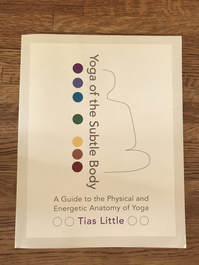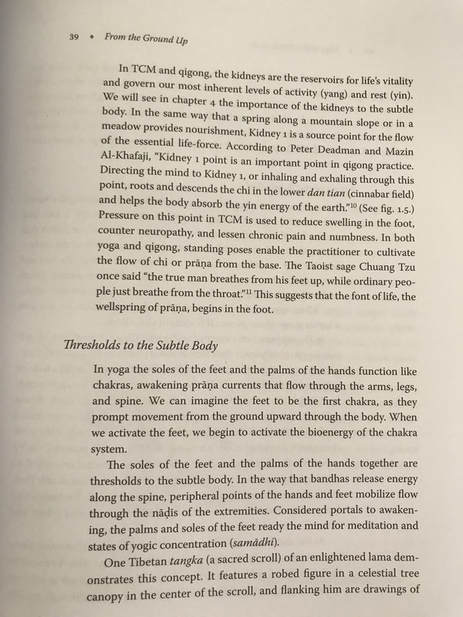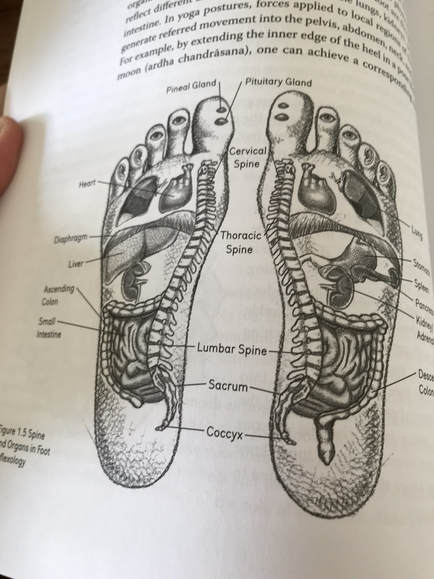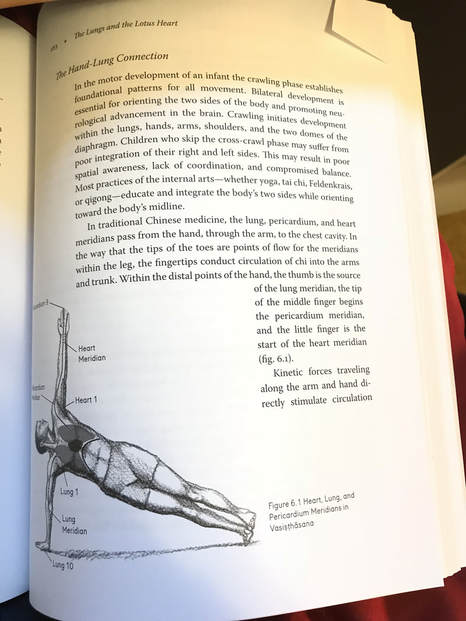"The practice of yoga, in fact, reveals that the body is in no way separate from the psychospiritual forces that animate it." 
This is the book I've been waiting for.
Have you ever read a book where you didn't even know what you didn't know until you read it? Reading this book, Yoga of the Subtle Body, was like finding the last few puzzle pieces I'd been looking for...BUT, instead of completing my puzzle, it has "springboarded" me to go even deeper into my yoga practice. The introduction starts with the question “What is the subtle body?” which is an excellent question. Indeed, what IS the subtle body?! He describes it as the fine, delicate, infinitesimally small, all-pervading psycho-spiritual force that transcends scientific rationale. (No wonder I had a hard time understanding it pre-book :) ) The neat thing about this book is that Tias unravels the complex and intricate aspects of the subtle body, while using our modern understanding of anatomy and physiology to anchor the teachings. There's more though. He weaves together wisdom from different practices, ages and disciplines including: classic Indian mythology, the chakra and nadis systems, the structural body, traditional Chinese medicine, craniosacral therapy and reflexology. He does a fantastic (and probably very hard) job at distilling and uniting all of this wisdom in one place.
Throughout the book, Tias includes gentle yoga, pranyama and meditation exercises that apply the mind-body principles he shares. These practices are not to be skimmed over, but to be slowly and deeply experienced, allowing the wisdom to absorb. He doesn't talk about asana as mechanical poses, but takes the reader much, much deeper into the felt and internal experience of the pose, and educates the reader on the vibrational, pranic and subtle aspects of the pose.
His writing is poetic and embodied - making this manual even more coveted in my opinion. As I was reading I could feel my inner body responding to his words. For example, "soak your awareness into your heartbeat the way rainwater soaks the ground after a storm," (page 185). It's in his use of language that he achieves his intention of inspiring the reader to look at their yoga practice in a new way. “I believe that ultimately it is impossible to articulate the yogic experience in words. By articulating the body-mind connection through analogy and image (such as lifting the brain stem upward like the hood of a cobra), a direct experience of the sublte body becomes more palpabe. Metaphorical thinking allows for greater flexibility, imagination, and openness, all of which are integral to the mind in meditation.” (page 2)
I found this book very applicable to grief, because grief is a holistic experience that permeates all aspects of our being. It's impossible to outline all the ways this book could be supportive of grief, because everyone's experience is individual - but I can guarantee that there will be something that resonates with your experience. He writes about prana, the immeasurable source of life itself, as being impacted by the powerful effects of emotion (page 3). He writes about the gut and emotional distress. He describe the energy channels and meridians of the legs as being essential for grounding, which can be really helpful in the wake of loss and upheaval. One part that I found really interesting is the hand-lung-heart connection (see photo below).
This review was difficult to write because of the amount of wisdom this book imparts, however, it's suffice to say that I thoroughly enjoyed reading it. So much so, that I'm reading it a second time. No, reading is the wrong word. I'm experiencing it in my body as I go through it again. I plan to take a really, really long time, and (quite literally) take-in, everything I can.
Resources for further exploration...
You can pick up a copy of this book on Amazon Canada by clicking the link below, or visiting your favourite bookstore.
While I was reading this book, I was concurrently doing a series on Gaia called Shapeshift: Exploring Movement & Emotions with Ashleigh Sergeant. She is a student of Tias Little's and offers a great 7 week series that guides you through some of the practices outlined in the book. It was really interesting to combine the two. Highly recommend.
I'd also recommend Tias Little's website - https://www.prajnayoga.net
You can also find him on YouTube. Just search his name in the YouTube search bar, and you'll find lots. READING GIVES US SOME PLACE TO GO WHEN WE HAVE TO STAY WHERE WE ARE. - MASON COOLEY
Namaste,
Sandy
0 Comments
Your comment will be posted after it is approved.
Leave a Reply. |
AuthorSandy Ayre Categories
All
Archives
December 2022
|
Classes
|
Helpful Info
|
|




 RSS Feed
RSS Feed
